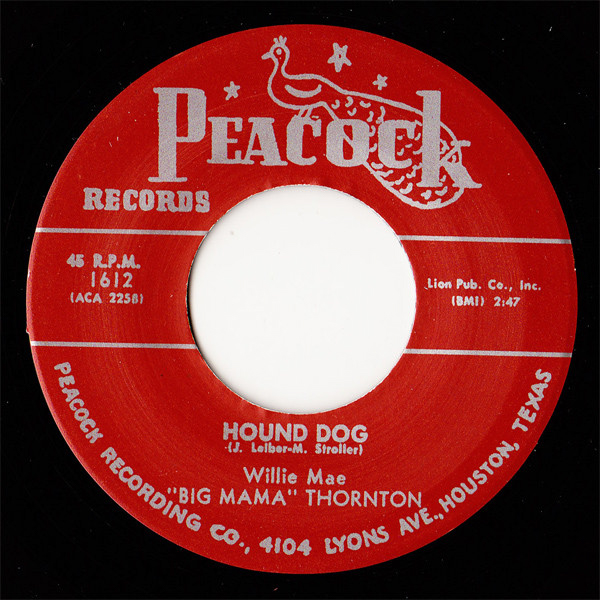Usually our “Off the Record” posts focus on one of our Radio Bristol DJs. Today, however, we asked Amythyst Kiah, one of our favorite artists, to tell us all about a song, record or artist she loves.
Throughout my musical and personal journey as an artist, I’ve been inspired by a variety of musicians in a broad range of genres. Although there are certain ones that invoke strong feelings of nostalgia for me (for instance, 1990s grunge rock and R&B), I’ve never been one to attach my identity to a genre of music – rather I’ve always been more drawn to the use of melody, arrangement, and grit.
As I started digging into earlier eras of popular music, there are two songs in particular, however, that have had a huge impact on me as a singer and songwriter in my mid-20s: “Hound Dog,” performed by Big Mama Thornton, and “Four Women,” written and performed by Nina Simone. These are important songs because of their place in popular music history, but they are also significant because behind both songs are women who weren’t initially accepted by their own peers in the music world because of their race.
“Hound Dog” was made internationally popular by Elvis Presley in 1956, and it is considered one of the most influential rock & roll songs. However, Big Mama Thornton was the first person to record the song in 1952.
https://www.youtube.com/watch?v=IgmKhIxMxdI
Written by Jerry Leiber and Michael Stroller, Thornton recorded the song on Peacock Records, and it was released four years prior to Presley’s recording. Her version has become my favorite. There is a certain rawness about her vocal delivery and the call-and-response between the lead guitarist and her voice that is simply captivating.
Thornton’s version would go on to influence other rock & roll singers, including Presley, and it was inducted into the Rock & Roll Hall of Fame in 2013. Despite this, Thornton revealed in a 1971 interview (Gunsmoke Blues, 2004) that Presley refused to do a show with her. It would only be in the late 1960s when Janis Joplin, who recorded Thornton’s song “Ball and Chain,” would not only formally recognize her as an influence, but ask her to open for her for a couple of concerts. This gives a little insight into the issues that the music industry caused for women of color – something as simple as being recognized for her work was a challenge in and of itself.
Check out Big Mama Thornton’s 1965 live performance here:
Nine Simone’s “Four Women” was a single from her 1966 album release, Wild as the Wind. It chronicles the lives of four black female characters from slavery to the present era: Aunt Sarah, Saffronia, Sweet Thing, and Peaches. Each woman experiences the effects of slavery in a different way. Aunt Sarah is presented as a slave who can take the pain; Saffronia’s birth was the product of the rape of a black woman by a rich, white man; Sweet Thing is a prostitute – historically women of color have been disproportionately put in positions of poverty where prostitution might be seen as the most effective way to make money to survive. And Peaches, who is the last of the four women and of the latest era, is justifiably upset about the plight of her parents and ancestors and has developed the thickest of skins in order to protect herself, presumably from the very things that haunt the other three women in the song: physical abuse, rape, and the hands of strange men.
What’s particularly intriguing about this song is that it offers no solutions; it is simply a telling of four experiences of women of different shades of brown and the struggles that each one faces. Simone herself would face racism herself at a very young age when she applied for the Curtis Institute of Music in Philadelphia and was denied entry, despite her talents, because of her race (two days before her death, they gave her an honorary degree). Nonetheless, from playing classical music to playing “the devil’s music,” according to her pastor mother and religious family, Simone had a harrowing journey as a musician and as a woman, an experience which is expressed in this powerful song – one of many she wrote as critiques and reflections on the realities of racism during the Civil Rights movement.


